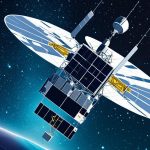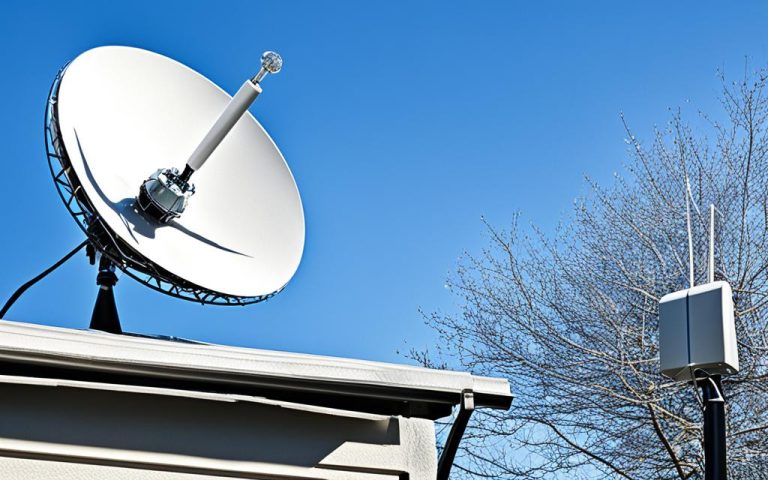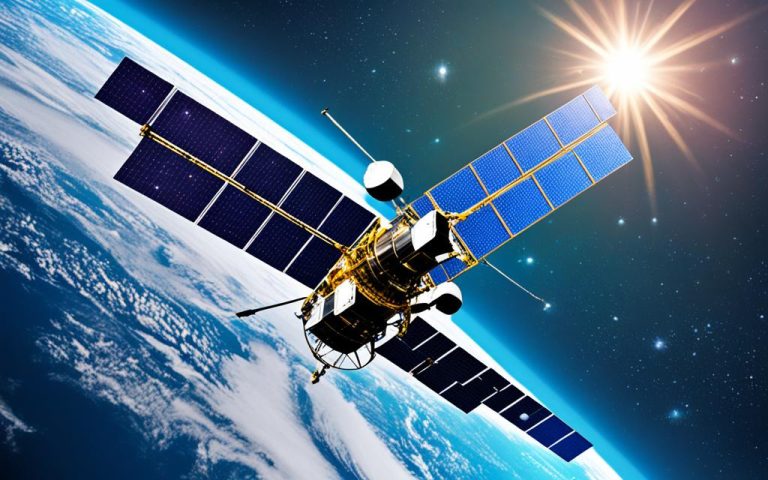In recent years, the cost of launching and maintaining satellite networks for IoT applications has been steadily decreasing. This is due to lower launch costs and the trend of launching smaller satellites into Low Earth Orbit (LEO).
However, the satellite IoT market still poses challenges. The requirement for massive subscriber numbers and the limited success of new satellite network operators have hindered its growth potential.
When it comes to choosing the right modems for satellite connectivity, there is a choice between proprietary and standards-based options. While proprietary modems have been the preferred choice, standards-based modems offer the potential for lower costs and greater flexibility.
Alongside modem choices, spectrum allocation is a crucial factor for satellite IoT. Licensed frequencies that are already allocated to established operators present challenges for new entrants.
In this article, we will explore these emerging standards for IoT connectivity via satellite networks in greater detail and discuss their implications for the future of satellite IoT.
Lowering Costs and Increased Competition in Satellite IoT
The satellite IoT industry has experienced significant changes, particularly in terms of cost reduction and increased competition. These developments have paved the way for greater accessibility and affordability in satellite IoT connectivity.
Cost Reduction in Satellite IoT
The cost of launching satellites into orbit has significantly decreased in recent years. Lower launch costs and the trend of deploying smaller satellites into Low Earth Orbit (LEO) have contributed to this cost reduction. As a result, satellite network operators can offer more competitive pricing for IoT connectivity services.
Additionally, the entry of more players into the satellite IoT market has led to increased competition. This competition has fueled further innovation and cost-cutting efforts as companies strive to gain a competitive edge and capture a larger market share. The increased competition has been crucial in driving down costs and making satellite IoT solutions more accessible to a wider range of industries and applications.
Furthermore, lower costs in satellite IoT have made it more viable for companies to invest in this technology and demonstrate a return on investment within a defined timeframe. However, despite the cost advantages, the growth of subscriber numbers has been slower than anticipated, posing some challenges for satellite IoT providers.
Potential for Lower Costs with Standards-Based Devices
Proprietary modems have traditionally been the preferred choice for communicating with satellite networks. However, standards-based IoT devices offer the potential for lower costs and increased flexibility in satellite IoT connectivity.
Standards-based devices enable seamless interoperability between different satellite network operators, eliminating the need for hardware changes when switching between providers. This flexibility allows companies to explore different service offerings and negotiate more competitive pricing for airtime and modems. By adopting standards-based devices, satellite IoT users can benefit from cost savings while enjoying the freedom to choose the most suitable satellite network operator for their specific needs.
Standards-based devices offer the potential for lower costs and greater flexibility in satellite IoT connectivity, allowing users to switch between satellite network operators without hardware changes.
The adoption of standards-based devices is expected to facilitate the development of more affordable modems and airtime. As the market embraces standards-based solutions, economies of scale are likely to drive down the prices of these essential components, making satellite IoT even more cost-effective for businesses and organizations.
To visualize the decreasing costs and increased competition in the satellite IoT industry, let’s take a look at the following table:
| Satellite IoT Providers | Cost Comparison | Number of Subscribers |
|---|---|---|
| Company A | High | 100,000 |
| Company B | Low | 50,000 |
| Company C | Low | 75,000 |
| Company D | Low | 60,000 |
The table above demonstrates the cost comparison among different satellite IoT providers. It is clear that the market is driven by increasing competition, with some companies offering lower costs to attract more subscribers. However, it is important to note that despite the lower costs, the growth of subscriber numbers has been slower than anticipated.
In conclusion, the ongoing efforts to lower costs and the intensifying competition in the satellite IoT industry have opened up new opportunities for businesses and organizations. The adoption of standards-based devices holds the potential for cost reduction and increased flexibility in satellite IoT connectivity. As the industry continues to evolve, it is expected that satellite IoT will become even more accessible and affordable, fostering innovation and driving digital transformation across various sectors.
Challenges of Spectrum Allocation in Satellite IoT
Spectrum allocation is a critical challenge in satellite IoT, as a significant portion of radio spectrum is licensed to prevent congestion and improve coordination. The frequencies reserved for satellite communication, known as Mobile Satellite Services (MSS), have already been allocated to established operators. New entrants into the satellite IoT market have three options:
- Working with shared UHF/VHF spectrum
- Repurposing cellular spectrum in collaboration with terrestrial networks
- Renting spectrum from existing satellite network operators
Each option has its advantages and limitations, and the choice depends on factors such as competition, regulatory challenges, and geographical obstacles.
Proprietary vs. Standards-Based Modems in Satellite IoT
Satellite IoT connectivity has traditionally relied on proprietary modems, which require hardware changes if switching between satellite network operators. This stickiness is advantageous for operators with established networks but poses challenges for users.
Alternatively, standards-based modems are compatible with unmodified terrestrial devices and offer the ability to switch between satellite network operators without hardware changes. Newer satellite network operators are more likely to adopt standards-based models, as they offer cost savings and increased flexibility. However, not all new entrants have embraced standards-based devices and continue to use proprietary models.
To better understand the differences between proprietary and standards-based modems, let’s take a closer look:
Proprietary Modems
Proprietary modems are specifically designed to work with a particular satellite network operator’s infrastructure. They provide optimized performance and may offer features tailored to the operator’s specific requirements. However, the downside is their lack of interoperability with other networks, as they cannot be used with different operators without undergoing hardware changes.
Standards-Based Modems
Standards-based modems, on the other hand, adhere to industry-standard protocols and specifications, allowing them to work seamlessly with different satellite network operators. This compatibility provides users the flexibility to switch between operators without the need for hardware modifications. It also opens up the possibility of using off-the-shelf terrestrial devices, simplifying deployment and reducing costs.
While standards-based modems offer clear advantages in terms of interoperability and cost savings, the choice between proprietary and standards-based models ultimately depends on various factors, including the specific requirements of the application, existing network infrastructure, and the willingness of the satellite network operator to support standards-based devices.
Overall, the transition towards standards-based modems in satellite IoT is driven by the need for increased flexibility, scalability, and cost-effectiveness. As the market continues to evolve, it is likely that more satellite network operators and new entrants will adopt standards-based modems, enabling a more open and interoperable ecosystem for satellite IoT connectivity.
The Future of Satellite IoT Connectivity
The future of satellite IoT connectivity is poised for a paradigm shift, with a growing two-tier market offering a range of services tailored to specific needs. As technology continues to advance, lower-cost and lower-capability services will cater to applications that do not necessitate real-time data transmission. These include agricultural monitoring, environmental surveillance, and various asset tracking systems. On the other hand, mission-critical applications such as pipeline monitoring and remote security alerts will continue to rely on higher-cost, high-capability networks that enable real-time data analysis and response.
Key to the success of future IoT networks, both proprietary and standards-based, is the active involvement of existing satellite network operators. These operators have a pivotal role to play in adopting standards-based modules, facilitating seamless integration, and leasing spectrum to new partners. This cooperative approach will foster innovation, expand market reach, and enhance the overall reliability and performance of satellite IoT connectivity.
“The future of satellite IoT connectivity is characterized by a dualistic market that addresses the distinct requirements of different industries. Lower-cost services target non-real-time mission profiles, while higher-cost networks ensure the delivery of critical data in time-sensitive applications.”
The advancement and adoption of satellite IoT connectivity standards will underpin this future landscape. Standardized modems enable interoperability, flexibility, and compatibility with unmodified terrestrial devices. By leveraging standards-based technology, satellite IoT networks can facilitate seamless connectivity between different satellite network operators without the need for hardware changes. Moreover, this approach empowers users with the ability to choose service providers based on their specific needs, offering freedom of choice and reducing dependence on proprietary solutions.
Standardization: Paving the Way for an Interconnected Future
Standardization plays a pivotal role in shaping the future of satellite IoT connectivity. By establishing common protocols and frameworks, it fosters collaboration, unleashes innovation, and bridges the gap between different technology domains. For satellite IoT networks, standardization allows for interoperability, scalability, and enhanced efficiency.
At the forefront of this standardization effort is the 3rd Generation Partnership Project (3GPP), an influential global initiative dedicated to defining wireless communication standards. 3GPP’s work in harmonizing cellular and satellite networks paves the way for seamless integration, enabling devices to seamlessly transition between satellite and terrestrial networks. This integration opens up new opportunities across a wide range of applications, driving advancements in sectors such as transportation, logistics, agriculture, and environmental monitoring.
By embracing these standards, satellite IoT connectivity realizes its full potential, offering reliable, cost-effective, and future-proof solutions for industries worldwide.

The image above encapsulates the vision of a future interconnected through satellite IoT connectivity. As the technology evolves, new opportunities and applications will emerge, transforming industries and shaping a digitally connected world.
Satellite IoT Connectivity Tariffs and Partnerships
Deutsche Telekom, a leading telecommunications company, has made significant strides in the satellite-based IoT connectivity space. Leveraging their extensive partner network, they have introduced new tariffs that cater to a wide range of use cases. These innovative tariffs combine both terrestrial and satellite-based connectivity, allowing customers to choose the most suitable package to meet their specific needs.
The integration of satellite connectivity with terrestrial mobile communications is made possible by the 3GPP standard, which enables devices to seamlessly connect to both satellite and cellular networks. This integration opens up a world of possibilities for IoT applications, offering enhanced coverage and reliability to a variety of industries.
Deutsche Telekom has forged strategic partnerships with key players in the industry to further expand their offerings. Collaborations with companies like Intelsat, Viasat, and Skylo enable Deutsche Telekom to deliver broadband, mobile, and narrowband IoT applications respectively. These partnerships ensure access to a robust network infrastructure and cutting-edge technologies, enabling reliable and efficient connectivity for a diverse range of IoT applications.
One of the notable initiatives that Deutsche Telekom is involved in is the Satellite NB-IoT Early Adopter Program. This program serves as a platform for collaboration and innovation, bringing together industry leaders to develop new solutions and explore the full potential of satellite-based IoT connectivity.
Deutsche Telekom is committed to continuously expanding its partner network, forging new alliances, and collaborating with innovative companies. These partnerships not only improve coverage and performance but also drive forward advancements in satellite IoT connectivity technology.
In summary, the introduction of new tariffs by Deutsche Telekom brings an exciting dimension to satellite-based IoT connectivity. Through strategic partnerships and collaborations, they are at the forefront of delivering comprehensive and reliable IoT solutions to various industries.
Conclusion
The emergence of Satellite IoT Standards coupled with the growth of satellite network operators has brought about new opportunities and challenges for the industry. On one hand, costs have been lowered and competition has increased, leading to reduced prices. However, the need to attract a massive number of subscribers and resolve spectrum allocation issues have proven to be hurdles in the path to success.
When it comes to connectivity options, users have the choice between proprietary and standards-based modems, each with its own advantages and considerations. Proprietary modems have offered stability for operators with established networks but have limited flexibility for users. On the other hand, standards-based modems provide cost savings and the ability to switch between satellite network operators without any hardware changes.
Looking towards the future, satellite IoT connectivity is expected to witness the development of a two-tier market. This will entail the introduction of lower-cost, lower-capability services that cater to applications not requiring real-time data transmission, such as agriculture and certain environmental monitoring applications. Meanwhile, higher-cost, high-capability networks will continue to cater to mission-critical applications necessitating real-time data, like pipeline monitoring and remote security alerts.
To shape the future of satellite IoT standards and connectivity, partnerships and collaborations will play a crucial role. By fostering strategic alliances, the industry can overcome challenges and ensure the successful implementation of standards-based solutions. Consequently, the future of satellite IoT looks promising, with increased connectivity options and enhanced efficiency on the horizon.
FAQ
What are the emerging standards for IoT connectivity via satellite networks?
The emerging standards for IoT connectivity via satellite networks include proprietary and standards-based modems. Proprietary modems require hardware changes when switching between satellite network operators, while standards-based modems offer compatibility with unmodified terrestrial devices and the ability to switch operators without hardware changes.
How have lowering costs and increased competition affected satellite IoT?
Lowering costs and increased competition in the satellite IoT market have driven down prices, making satellite connectivity more accessible. However, companies still need to demonstrate a return on investment within a defined timeframe, and the growth of subscriber numbers has been slower than anticipated.
What are the challenges of spectrum allocation in satellite IoT?
Spectrum allocation is a critical challenge in satellite IoT as licensed frequencies are already allocated to established operators. New entrants into the satellite IoT market have options to work with shared UHF/VHF spectrum, repurpose cellular spectrum in collaboration with terrestrial networks, or rent spectrum from existing satellite network operators. Each option has its advantages and limitations, depending on factors such as competition, regulatory challenges, and geographical obstacles.
What are the differences between proprietary and standards-based modems in satellite IoT?
Proprietary modems have been traditionally used in satellite IoT connectivity but require hardware changes when switching between satellite network operators. On the other hand, standards-based modems are compatible with unmodified terrestrial devices and offer the ability to switch between satellite network operators without hardware changes. Newer satellite network operators are more likely to adopt standards-based modems due to cost savings and increased flexibility.
What is the future of satellite IoT connectivity?
The future of satellite IoT connectivity is expected to see a two-tier market. Lower-cost, lower-capability services will cater to applications that do not require real-time data transmission, such as agriculture and some environmental monitoring. Existing higher-cost, high-capability networks will continue to serve mission-critical applications that require real-time data, like pipeline monitoring and remote security alerts.
What are the satellite IoT connectivity tariffs and partnerships offered by Deutsche Telekom?
Deutsche Telekom has introduced new tariffs for satellite-based IoT connectivity, offering a range of use cases. The tariffs combine terrestrial and satellite-based connectivity, allowing customers to choose the most suitable package for their needs. Partnerships with Intelsat, Viasat, and Skylo enable broadband, mobile, and narrowband IoT applications, respectively. Integration of satellite connectivity with terrestrial mobile communications is possible through the 3GPP standard, which allows devices to use both satellite and cellular networks. Deutsche Telekom continues to expand its partner network and collaborate with companies in the Satellite NB-IoT Early Adopter Program.
What can be concluded about satellite IoT standards and connectivity?
The emergence of satellite IoT standards and the growth of satellite network operators have presented both opportunities and challenges for the industry. Lowering costs and increased competition have driven down prices, making satellite connectivity more accessible. However, the need for massive subscriber numbers and spectrum allocation issues remain challenges. The success of future IoT networks, both proprietary and standards-based, will depend on the involvement of existing satellite network operators and their willingness to adopt standards-based modules and lease spectrum to new partners.



















